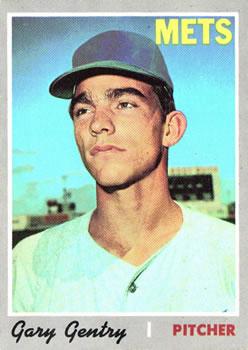September 11, 1969: First-place Mets win again, while Expos look ahead to future
 “Are you serious, the Mets? A team that wound up 16 games under 500 in 1968?” wrote Montreal Gazette sportswriter Ted Blackman after the New York Mets continued their improbable drive for the 1969 National League East Division title with a 4-0 blanking of the first-year expansion Montreal Expos on September 11 at Shea Stadium. 1
“Are you serious, the Mets? A team that wound up 16 games under 500 in 1968?” wrote Montreal Gazette sportswriter Ted Blackman after the New York Mets continued their improbable drive for the 1969 National League East Division title with a 4-0 blanking of the first-year expansion Montreal Expos on September 11 at Shea Stadium. 1
“And if the Mets can make the World Series in their eighth year, can the Expos be far behind?”
“Maybe five years and that means that the players who do it will be uncovered this year and the next two years,” said Expos general manager Jim Fanning, who was at Shea Stadium as “an eyewitness to what many still can’t believe – the Amazing Mets’ foothold on first place.”
“They didn’t start with what we have already,” said Fanning. “We have some raw talent out there. They had a stopgap team and began to build. We’re building with what we have. The talent maybe up here too soon but at least it’s here, and we have it.” 2
According to Blackman, the Mets did it through scouting and signing the best talent their organization could unearth. “While the men in the Polo Grounds kicked away games in large numbers, the bird dogs scouted the country,” wrote Blackman, referring to the Mets’ home field in 1962 and 1963, when they lost a total of 231 games.3
The Expos had a long way to go before reaching the success of the 1969 Mets. When Montreal played the Mets on Thursday afternoon, September 11, the Expos led the majors with 99 losses and had been shut out 14 times. Their season looked as if it might finish on a high note after they defeated the third-place Pittsburgh Pirates two days earlier, for a modest surge of three wins in their last four games, but they then lost both ends of a series-opening doubleheader to the Mets on September 10. The Mets pushed across a 12th-inning run to win the opener, and 22-year-old Nolan Ryan fanned 11 Expos in the nightcap.
The doubleheader sweep gave the Mets six wins in a row and seven of eight on their current homestand. It put them in first place in the NL East, and they celebrated the occasion with champagne in their clubhouse.
The Mets, a franchise that had lost 120 games during their maiden season of 1962, to this point had never finished higher than ninth place, and weren’t expected to be very good this year, were in first place. How did the Mets improve almost overnight? “I remember back in 1966 we’d get to the seventh inning and I was scared, scared they’d hit the ball to me, scared we’d lose, and everyone else felt the same way and that’s why we lost a lot of games,” shortstop Bud Harrelson, a Met since 1965, said after the doubleheader win. “If we won it was like winning the World Series.”4
“It was all cliques then,” said first baseman Ed Kranepool, who had joined the Mets in 1962, at age 17. “The older players were just playing out the string. Those who knew each other from being in other organizations stuck together. No one helped anyone else much; the youngsters were intruders.
“The big change came late in the 1967 season, when all our young players started to come up. Now everyone knows everybody, everyone helps – it’s great.”5
Rookie pitcher Gary Gentry, in search of his 11th win of the season, and bidding to become the second Mets pitcher to win the NL Rookie of the Year Award in three seasons,6 took the mound for the home team on September 11. In the first three innings, Gentry faced just one batter over the minimum while blanking the Expos.
The New York batters were scoreless in the first two innings against rookie Jerry Robertson, whose 3.81 ERA suggested that he had pitched better than his 5-12 record. In the bottom of the first, the Mets put two runners on base with one out but couldn’t score. Catcher Duffy Dyer doubled with one out in the second, but once again the New Yorkers were unable to score. As for the third, the New York Times summed up: “The Mets went through a lot of waste motion, but they scored enough … in the bottom of the third without the ball being hit past the infield.”7
New York’s Tommie Agee led off the third by beating out a grounder to shortstop. He stole second and was awarded third when Expos second baseman Gary Sutherland was charged with baserunner interference. Agee scored on a passed ball, which ignited a celebration among the 10,713 in attendance. Streamers fashioned from ripped newspapers littered the air and thousands of white handkerchiefs left over by the “Goodbye Leee-o” chorus from the triumphant recent Mets-Cubs series – back-to-back New York wins over then-first-place Chicago – were waved.8
The Mets had a chance to add to their lead before the inning was over, when a hit batsman, a single, and a walk loaded the bases, but Dyer grounded out.
After Gentry took care of the Expos in the fourth and fifth to preserve the one-run lead, the Mets added a run in the fifth. Cleon Jones reached base on an infield hit, Art Shamsky walked, and Ken Boswell doubled into the right-field corner to score Jones and put runners on second and third. When Ron Swoboda followed by drawing a base on balls, the bases were loaded with still nobody out. But with a chance to blow the game open, the Mets, once again, failed. Dyer struck out, Harrelson grounded into a force out at the plate, and Gentry struck out.
With the Mets still ahead, 2-0, and with two down in the bottom of the sixth, Jones walked and Shamsky lined a single to right field. Jones rounded second and kept on running. Sutherland, surprised that Jones would try to score from first on a single, hurried his throw and heaved the ball over the catcher’s head. Shamsky, who was content with staying at first base after his hit, accepted second base on the overthrow.
The next batter, Boswell, received an intentional pass. Once again, the Mets were in position to score more runs, but the inning ended when Swoboda grounded out. Through six innings the Mets owned a 3-0 lead, but had left 12 runners on base.
In the bottom of the eighth, a hit-batsman, a sacrifice, and an RBI single by Rod Gaspar made it 4-0 in favor of the Mets. In the ninth, Gentry struck out third baseman Coco Laboy for the final out of the game. For the Mets right-hander, Laboy was his ninth strikeout victim of the afternoon.
Gentry had allowed just six hits and did not allow an Expo to reach second base, which boosted his Rookie-of-the-Year credentials. “Funny you should mention the rookie award,” Gentry told a group of sportswriters after the game. “I never thought about it before, but last night while I was lying in bed it crossed my mind.”9
Gentry attributed his recent success to changing his grip on the baseball before delivering his fastball. “Before I pitched in Los Angeles recently, Jerry Koosman talked to me about it,” Gentry explained. “He suggested I try throwing the ball with my fingers across the narrow seams instead of the wide seams. I’ve been following Jerry’s advice, though, and the ball dips down, goes in and tails back with a lot of life.”10
For Montreal, the setback meant they had reached the century mark in the loss column during their first year of existence. Maybe in the future, like in seven years, or sooner, they could be Amazing, like the Mets. “The entire city has gone wacky over their beloved New York Mets,” the Montreal Star noted about New York City. “True the same statement could apply for each of the past seven years, but this is the first time the Mets have actually given the people a bonafide reason.”11
Acknowledgments
This article was fact-checked by Thomas J. Brown Jr. and copy-edited by Len Levin.
Photo credit: Gary Gentry, Trading Card Database.
Sources
In addition to the sources cited in the Notes, the author consulted Baseball-Reference.com and Retrosheet.org for pertinent information, including the box score and play-by-play.
https://www.baseball-reference.com/boxes/NYN/NYN196909110.shtml
https://www.retrosheet.org/boxesetc/1969/B09110NYN1969.htm
Notes
1 Ted Blackman, “Expos Need 5 Years to Reach Level of Mets,” Montreal Gazette, September 12, 1969: 13.
2 “Expos Need 5 Years to Reach Level of Mets.”
3 “Expos Need 5 Years to Reach Level of Mets.”
4 Robert Lipsyte, “Sports of the Times: One Fine Night,” New York Times, September 11, 1969: 56.
5 Leonard Koppett, “The Yout’ of America,” New York Times, September 12, 1969: 51.
6 Tom Seaver was the 1967 NL Rookie of the Year, and Jerry Koosman had been the runner-up to Cincinnati Reds catcher Johnny Bench in 1968.
7 “Mets Top Expos, 4-0, for 7th in a Row and Lead by 2 Games as Cubs Bow, 4-3,” New York Times, September 12, 1969: 51.
8 During the Mets-Cubs series on September 9, a sold-out crowd at Shea Stadium waved white handkerchiefs while singing “Goodbye Lee-o” during the Mets’ win to complete the two-game series sweep over the Cubs and move the Mets to within one-half game of the first-place Cubs. The next day the Mets moved into first place by sweeping a doubleheader from the Expos while the Cubs lost at Philadelphia. “Lee-o” was Cubs manager Leo Durocher.
9 Dan Rosenburg, “Expos Reach Century,” Montreal Star, September 12, 1969, 11. Gentry finished the 1969 season with a 13-12 record and 3.43 ERA in 35 starts but did not receive any Rookie of the Year votes. Ted Sizemore of the Los Angeles Dodgers was the award winner.
10 “Expos Reach Century.”
11 “Mets fans amazing,” Montreal Star, September 11, 1969, 21. The Mets won the NL East with a 100-62 record, then defeated the Atlanta Braves in the NL Championship Series and the Baltimore Orioles in the World Series. The Expos finished 1969 with a 52-110 mark, equaling the San Diego Padres, also a first-year expansion club, for the worst record in the majors. Montreal recorded its first winning record in 1979, the Expos’ 11th season of existence.
Additional Stats
New York Mets 4
Montreal Expos 0
Shea Stadium
New York, NY
Box Score + PBP:
Corrections? Additions?
If you can help us improve this game story, contact us.

